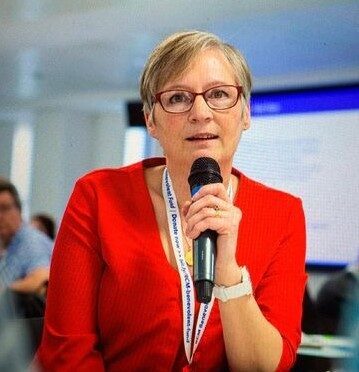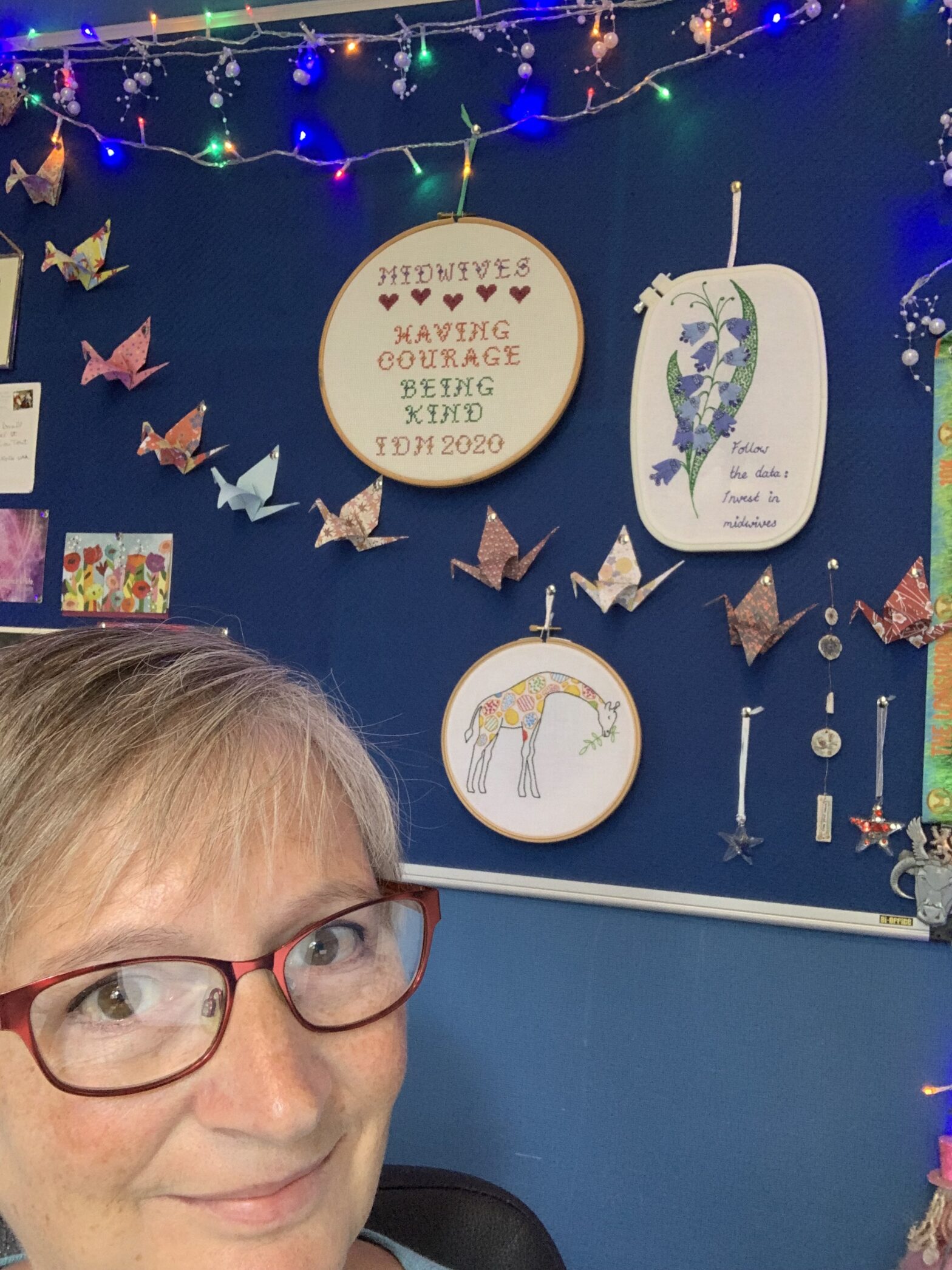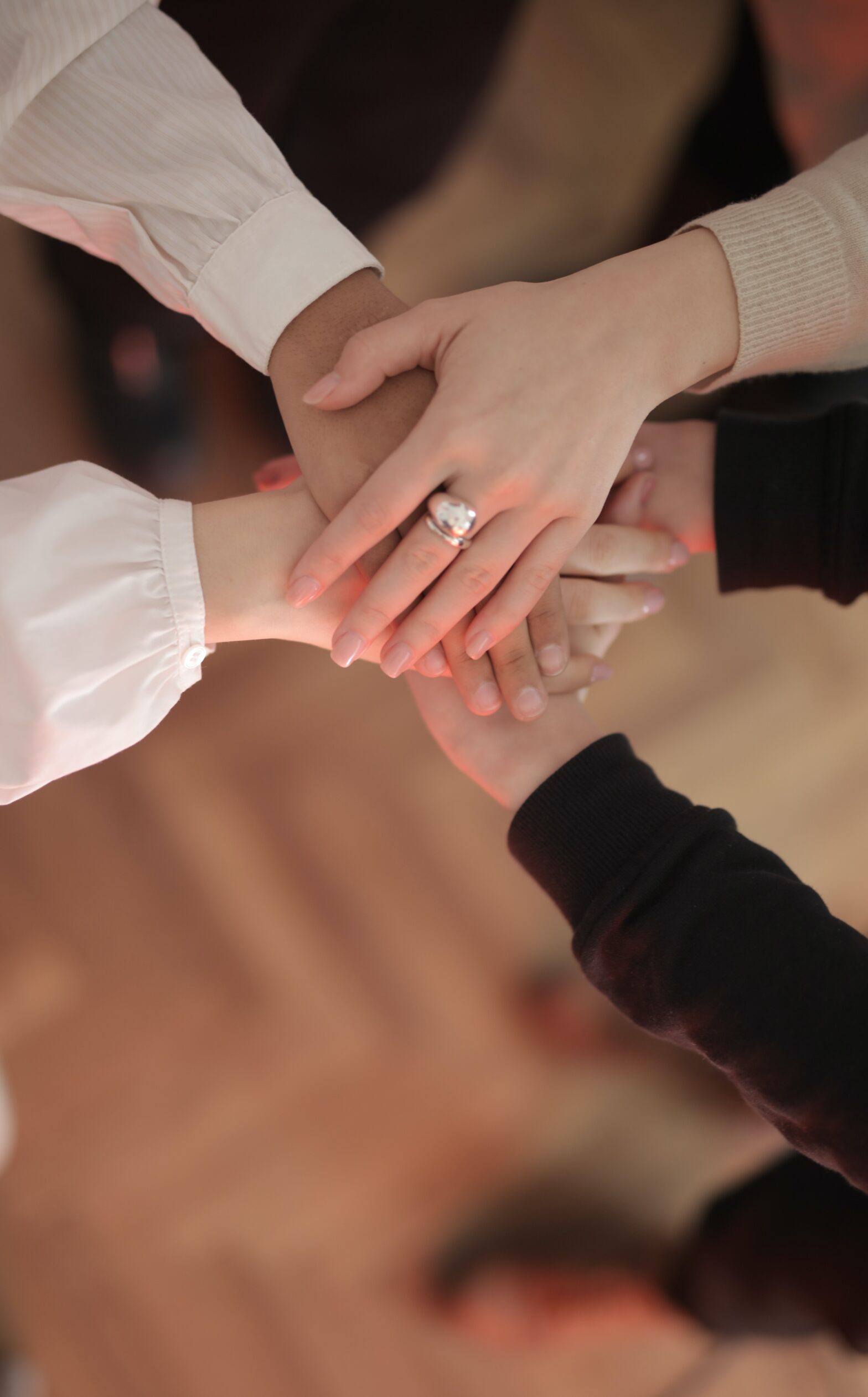Bringing your authentic self to work, and particularly in the context of leadership and management, has been a hot topic in recent years. It sounds simple, and actually pretty logical, if you think about authenticity in terms of your values and behaviours:
‘Being your true authentic self means what you say in life aligns with your actions… It is who you are at your deepest core. It is about being true to yourself through your thoughts, words and actions, and having these three areas match each other’. Read more about authenticity here.
But what does it really mean for us to be our authentic self in the workplace, and what are some of the challenges? This week, I’m exploring the topic of authenticity in relation to my own office space.
As you can see from the image adorning this post, I don’t have what you might call a muted office backdrop. This is my most recent office space (at home, of course) but wherever I’ve had a desk I’ve taken the same approach. My colleagues at the University of Nottingham will remember my year-round tinsel and the seasonal crochet displays, while at Northumbria University I had a noticeboard full of Instax photos and running medals. While working at the Royal College of Midwives, I somehow managed to persuade the facilities manager to put up a shiny new noticeboard behind my desk, and I imagine he assumed it would be for important notices and spreadsheets. Well, it definitely did have some spreadsheets, but of course there were many other things on it as well. Although no fairy lights.
The backdrop I’m working with at the moment might look chaotic, but it’s actually been quite carefully thought out. The fairy lights are pretty normal for my house (to the point where my mum said it looks like we live in a grotto!), but the other elements are worthy of a closer look.
First, the origami cranes. I had a pretty tricky beginning to 2021, and during the first few months of the year I needed to work quite hard at distracting myself from some challenging events. I’ve always used origami as a means of disconnecting from problems, or as a support for thinking time (try it – it’s ace!) and someone told me that if I make 1000 cranes I can have a wish. I mean, I could just go and throw a coin into a well, but this method of getting a free wish will be such a conversation starter!
Next, the embroidery. For one thing, I love to sew (and I was sewing when it most definitely was not a cool thing to do), and I was exploring how sewing might be a way of expressing myself. As for the designs, these reflect all things midwifery: the giraffe relates to the subject of my doctoral research, while the other two pieces reflect the most recent themes for International Day of the Midwife.
And finally, there are several little art pieces and postcards, all of which have been gifted to me by significant people or chosen as a memory of important places in my life.
So how does it feel to bring my authentic self to work every day? At first, I found myself worrying that the backdrop to my office was just too colourful – should I be more corporate? Do I look like a crazy lady? But then I thought, should this even matter? And in fact, it’s proved a really positive ice breaker and conversation starter in lots of contexts. I’ve been told by midwives in my leadership workshops that they feel relaxed because they can see immediately who they’re working with. And in meetings, I’m very (very!) often greeted with expressions of delight at the fairy lights – apparently, they’re guaranteed to brighten up the dullest morning.
I’m lucky, in the sense that it’s easy for me to show myself at work: that backdrop is visible every day, and let’s not forget that I also have a long history of (perhaps) over-sharing. For others, it may be more of a challenge, as they prefer to keep some things back. For some people, there’s comfort to be found in separating work from home entirely. It really doesn’t matter which approach works best for you – it’s just important that you’re comfortable with what you choose to show, and that you’re not in a position where you feel it’s based on others’ expectations rather than your own decisions. That’s the true key to bringing your authentic self to work.


